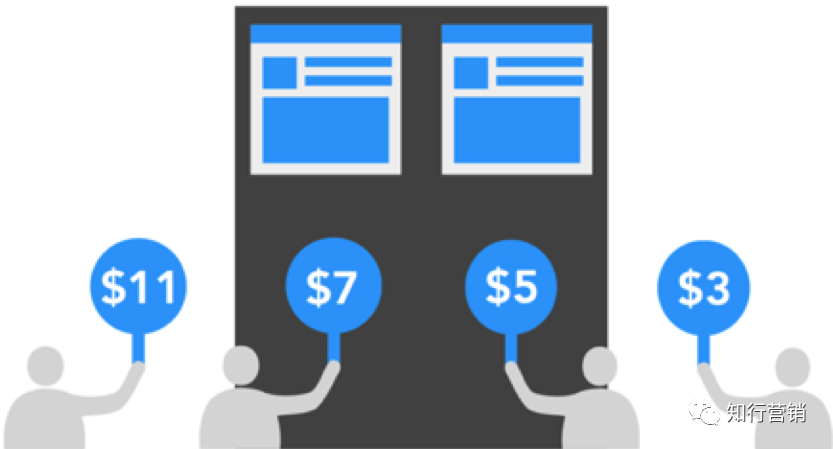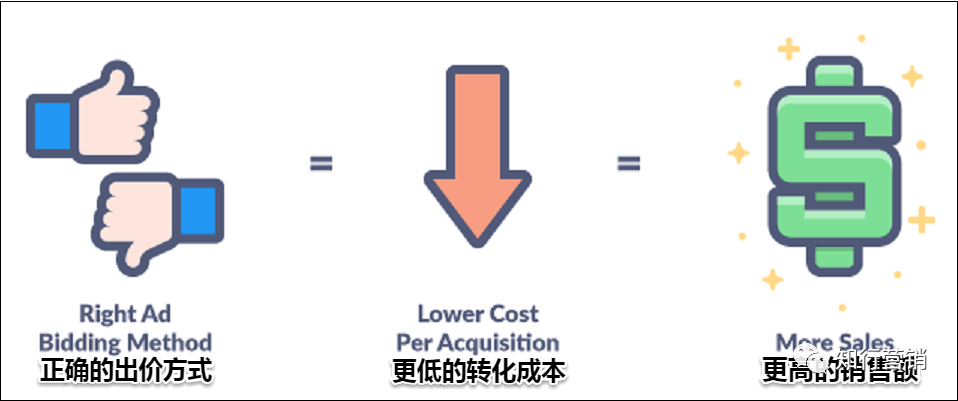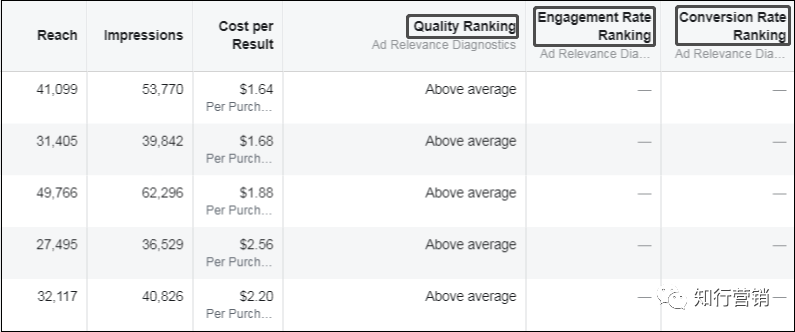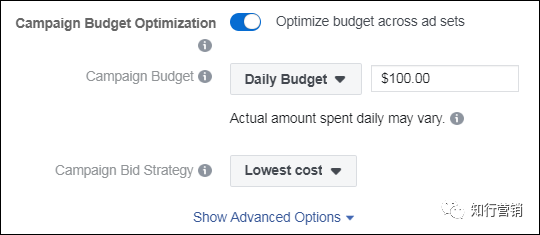Still wasting advertising money? Learn these Facebook ad bidding tips to help you save money quickly
Know Facebook Marketing
College.
Double your ROI in 30 days
the prophet and then on
While Facebook ad bidding is not as addictive as gambling, when you've run a lot of Facebook Campaigns, it can make you addicted quickly. Choosing the right Facebook ad bid can help your ads reach your target audience quickly and effectively, and effectively reduce your CPC and CPC.

Next, you'll be told about the latest Facebook ad bidding rules and your experience with ad bidding with a lot of money to help you beat your competitors.

Why do I need to optimize my Facebook ad auction?
You can also choose to have your Facebook campaign automate bidding and bidding, but that's certainly not the best, even if in some cases it's likely to get good ad results.
AdEspresso conducted an ad bidding experiment in which they selected four bidding methods to test:
Cost Per Click - cost-per-click
Cost Per Mile - Cost per thousand impressions
Optimized Cost Per Mile - Optimized for cost per thousand impressions
Cost Per Ing - Cost-per-conversion
In the experimental results, the difference is obvious, the biggest difference is more than 2800%.

Although this is only a small experiment, it is also enough to illustrate the selectivity and testability of Facebook's ad bidding methods.


How does Facebook ad bidding work?
Facebook's ad auction is like an auction, as advertisers use Facebook ads to attract billions of potential customers, Facebook can no longer satisfy all advertisers, when too many advertisers want to develop the same customer at the same time, the system can only let these advertisers bid, the highest bidder will get most of the ad opportunities, but the highest bid, but not necessarily to let your ads run.
How do you understand that?
In fact, Facebook's ad delivery is mainly influenced by two factors:
Create value for advertisers by helping them reach their target audiences and get conversions
Provide a great user experience for people who use Facebook, Instagram or Audience Network
As a result, Facebook's ad bidding method is different from the traditional bidding method, the winner is not necessarily the highest bidder, but the three factors combined with the best advertisers to be able to display.
2.1 Three factors facebook identifies as the winner of an ad auction:

Advertiser bids:Bid amounts set at the ad set level can be automatic or manual.
Ad quality and relevance: Facebook evaluates a person's interest in your ads. If an ad gets a lot of negative feedback, it reduces the total value of the ad. If the person is interested in what you're promoting, it increases the total value of your ad. And these, are through the relevance score of advertising to reflect. At the Ad level, you can assess how well your ads resonate with your audience by looking at your relevance performance. (The new version split into three indicators, which will be featured in the article.) )

Estimated action rate:It is Facebook that calculates the likelihood that users may complete your optimization events. This estimate is based on the ad's past performance.
When an auction occurs, Facebook standardizes these factors and combines them into a total value, with the highest-value ads winning the auction.
2.2 How does Facebook charge?
So how does Facebook charge a fee when it knows how Facebook's bidding works?
It's a little complicated, so let's look at an example. Imagine you set a $20 bid (or "CPM" bid) for 1,000 ad impressions. So when you win the bid at a lower price, will you pay $20 for every 1,000 impressions?
The answer is "NO".
Here's what we need to say about Facebook's charging algorithm: the VCG algorithm.
VCG algorithm:Advertisers pay for the loss of effectiveness for other advertisers with a click of a netizen. The significance of this algorithm is that, assuming that advertising revenue is fixed for Facebook, the successful bidders have reduced Facebook's revenue by depriving other advertisers of opportunities.
For example: two ad bits, three advertisers.

A does not participate in the auction, the total effective value of B and C is 300 x 5 x 100 x 1 x 1600 yuan
A If you participate in the auction, the total utility of B and C is 100 x 5 x 0 x 1 x 500 yuan
Because A participated in the auction, resulting in the loss of the total effective value of B and C 1100 yuan, A needs to pay 1100 / 300 x 3.67 yuan for each click.
At this point, you'll find that Facebook's ad bidding is risky, but it's not, and that means:
Your fee is usually lower than the initial bid you set for your ad.
Even if your bid exceeds the advertising fees you pay, Facebook will only charge you more than your competitors need.
For these rules, Facebook advertisers have specifically done this type of test:

For this ad, he created three ad groups with different CPM (thousand impression fee bids):
Desktop NewsFeed: $20
Table right column: $10
Cell phone: $20
In fact, the fees he pays for each ad group are:
Desktop NewsFeed: $9.48
Table right column: $1.48
Cell phone: $9.63
There are concerns that the disorderly charging phenomenon has not occurred. So if you can pay a higher performance fee, then you can set a higher Facebook ad bid becauseIn the end, you'll only have to pay the minimum cost of running your ad.

How do I select and set up a Facebook ad auction?
3.1 Facebook ad bidding options
Currently, ad bids and budgets can be set in two locations, one at the campaign level for CBO features.

The other is set up in the "Budget and Schedule" section at the ad group level.

Choose how to set Daily Budget (Daily Budget) and Lifetime Budget (Lifetime Budget) above
Daily Budget:Set a daily Facebook delivery fee during the campaign's release. When your ads run, you'll find that your ad budget is just an average budget, and when your ads perform well, you can spend up to 25% more per day and lower when you're not doing well. So your daily ad spend might be like this:

Lifetime Budget:This is the total amount you're willing to spend over the lifetime of your ad.
3.2 Facebook Ads And Optimization (Optimizing for Ad Delivery)
Depending on your campaign goals, you can choose the ad optimization that's right for you in the Optimization for Ad Delivery option.

One thing to note about the optimization options is that the choice of ad optimization methods varies for different campaign goals. So before you create a new Facebook campaign, you need to identify the ad goals you want to achieve most.
How do I choose your ad target? The best thing to do about this is to choose the campaign goal that is closest to your results:
If you want people to convert on your site, choose a conversion target.
If you want people to install your app, select the app installation target.
To collect new lead contacts, select the Conversions or Leads target.
If you want people to download your eBook and become a potential customer, choose Lead Generation's target.
After choosing a target, I believe that many people will be confused when faced with many different ad serving optimization options, do not know how to choose the right choice, so we also listed and explained these optimization options.
Conversions - Conversions

When you bid for conversion optimization, Facebook delivers your ads to the people who are most likely to convert.
Use cases:Get people to subscribe to your service or buy your products, get people to fill out lead forms, etc.
Post Engagement-Post Interactive

When you bid on Post Engagement, Facebook shows your ads to people who might like, comment on, or share Facebook posts.
Use cases:Promotional posts.
Impressions - Showcase

Facebook will run ads to as many people as possible while keeping them within their budget. That way, however, Facebook won't optimize on who's more likely to interact with your ads.
Use cases:Promote limited-time offers, promote compelling blog content, or target highly specific audiences.
Attention:When optimizing your ad serving for Pressions, be careful not to set a large campaign budget. Keep a lower daily budget and create frequency caps - in other words, prevent Facebook from running ads to the same person 10 times a day. Limit your ads to 3-4 days to avoid getting bored when your target audience sees your ads.
Reach- Reach- Reach

Facebook will run ads in its ad groups to as many people as possible. This is when you choose to market your ads once a day, but you need to keep a close eye on your ad frequency and campaign performance to track when people start getting tired of your ads and stop interacting.
Use cases:Remarket campaigns, target Facebook Custom Audiences, or market to existing potential customers.
Link Clicks - Link Clicks

If you want to get more click traffic to your site or Facebook page, you can optimize your ad for link clicks. Facebook will serve ads to the people most likely to click on them.
Use cases:Promote blog content to increase traffic to your website or app's download pages. Promoting posts on Facebook can also choose this goal to optimize your ads.
Attention:If your goal isn't to get people to visit your site, but to get them to take specific action on your site, optimize conversions instead of clicking.
Brand Awareness - Brand Awareness

Facebook will run your ads to the people most likely to be interested in your brand and product, and Facebook will charge you based on CPM (per thousand impressions).
Use cases:The optimization goal is Ad Recall Lift, which is undoubtedly suitable for quickly opening up a market in the early stages of branding.
Attention:When choosing, know what you want most.
For example, if your ads are optimized for Conversions, Facebook will show the audience most likely to convert. But if you choose to optimize for Impressions, Facebook will get more impressions for you, but these audiences rarely convert.
If you're not sure what your ad goals are and how to optimize them, you can refer to usA/B Testarticle to test.
3.3 Facebook ad bidding new feature - Cost Cap bidding (cost cap bid)
In April 2019, Facebook announced options for a cost cap bid strategy based on demands from advertisers who want to increase sales and control costs. This feature, called Cost Capbidding, lets you set max CPA/CPI (the maximum cost per optimization event set).

When you set your bid limit in Cost Control, there are three bidding strategies. These three bidding strategies tell you how Facebook's bidding system works when it's bidding.
Cost cap (fee cap)
Bid cap (bid cap)
Target cost (target cost)
For the difference between the three bidding modes, we use Cost cap to compare with the other two bidding models.
1. What is the difference between Cost cap and Target Cost?
Both bidding strategies use the average fee control amount as a baseline, but the difference is that they work differently.
With target cost bidding strategies, if there are optimization events in the system that cost less to convert, the system will still only select conversions that are closer to the target cost, and when you use Cost cap, the system will first help you get the optimization events with the lowest conversion costs, and try to keep your conversion costs below the average set cost. (This is one of the reasons cost cap is placed in the default preferred position.) )
2. What is the difference between Cost cap and Bid cap?
Cost controls using cost cap bidding strategies are more flexible and less restrictive than Bid caps. This is because Cost cap's application object is the average cost of a single optimization event, which allows the system to compete for different auction opportunities over a wider range of costs. While the cost of some optimization events may exceed the cost limit, the average cost will not exceed the fee control amount you set up throughout the ad group's release cycle.
However, with Bid cap, bid control is less flexible and limits the bid per auction. For example, if you set the Spot Control to $5 and the $5.01 Spot gets 100 optimization events, the system won't try to get those 100 optimization events with Bid cap (but if you use Cost bid, the system will try to get those 100 optimization events). So this bidding model applies to ad set, which is strictly controlled for fees.

If you're familiar with the Average feature in older manual bids, it's easier to understand Cost bids. Average bids maximize conversions for you and stay within the bid limits you set.

The extended bid feature will be released at the same time as Facebook completely changes its ad management interface, adding features such as auto-naming campaigns and copy-and-paste when crafting ads to save time. The interface supports new bid options to help you choose the right bid strategy to maximize your ad revenue without sacrificing results.
Conclusion:
The Facebook ad auction you choose will have a huge impact on Campaign's reach, CPC and CPA.
The best way to understand how ad bidding works is to do some A/B testing (inner chain) based on your previous experience The more you try, the more Campaign you run and the better you'll get. Now, start with Facebook Auto-Optimization, learn from the results, and try manual ad bidding!

Committed to sharingAccurate digital conclusions, proven account promotion experience and
Leading advertising marketing techniques.
Know the line
Know.Yes.
FacebookWide.Sue.Ying.Pin.Learn.Hospital.


Go to "Discovery" - "Take a look" browse "Friends are watching"